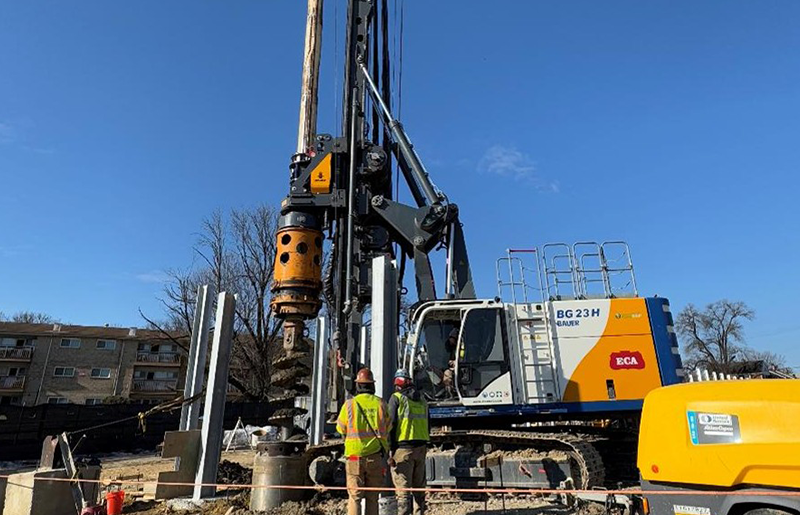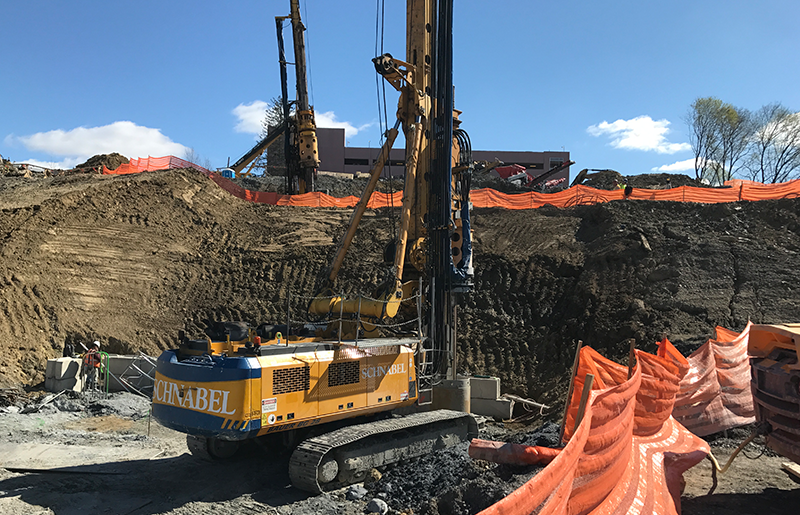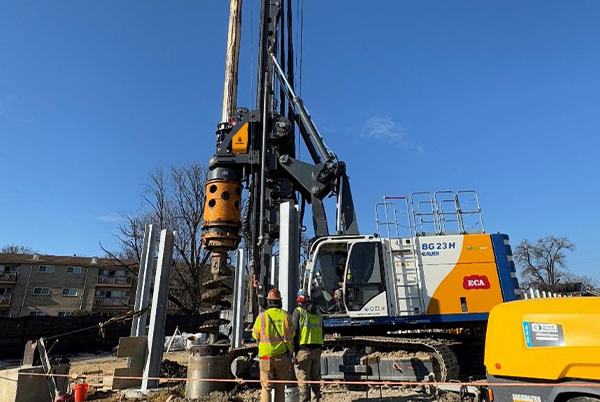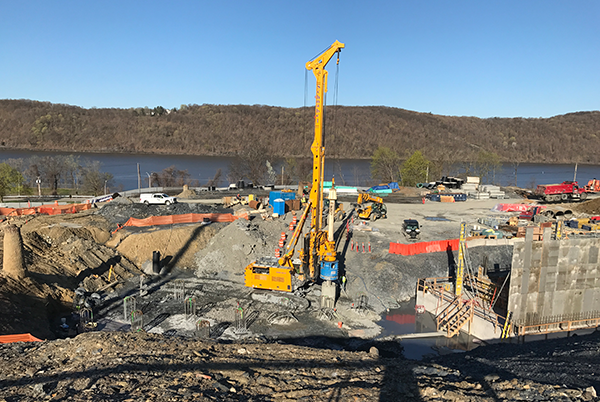DRILLED SHAFTS
As one of America’s top design-build contractors, Schnabel delivers high-quality drilled shaft foundation solutions tailored to meet the demands of the most challenging projects.
Drilled shafts—also known as caissons, drilled piers, or Cast-In-Drilled Hole (CIDH) Piles—are deep foundation elements that provide reliable support for heavy structural loads. They are ideal for transferring high axial and lateral loads to deeper, more competent soil or rock layers when surface soils are inadequate.
Schnabel uses advanced drilling techniques and equipment to ensure the safe, efficient, and cost-effective installation of these foundation systems—even in complex ground conditions and space-restricted sites.
Drilled Shaft Solutions
Drilled shafts are constructed by excavating a cylindrical hole into the ground using specialized drilling equipment. Reinforcing steel is then placed in the shaft, followed by concrete placement to create a high-capacity deep foundation element. Shaft diameters can range from 2 feet to over 10 feet, with depths exceeding 100 feet, depending on project requirements and soil conditions.
These foundations are commonly used to support heavy structures such as bridges, buildings, and towers, particularly where shallow foundations are not viable. Drilled shafts can also be engineered to resist uplift and lateral forces, making them suitable for seismic zones or wind-sensitive structures.
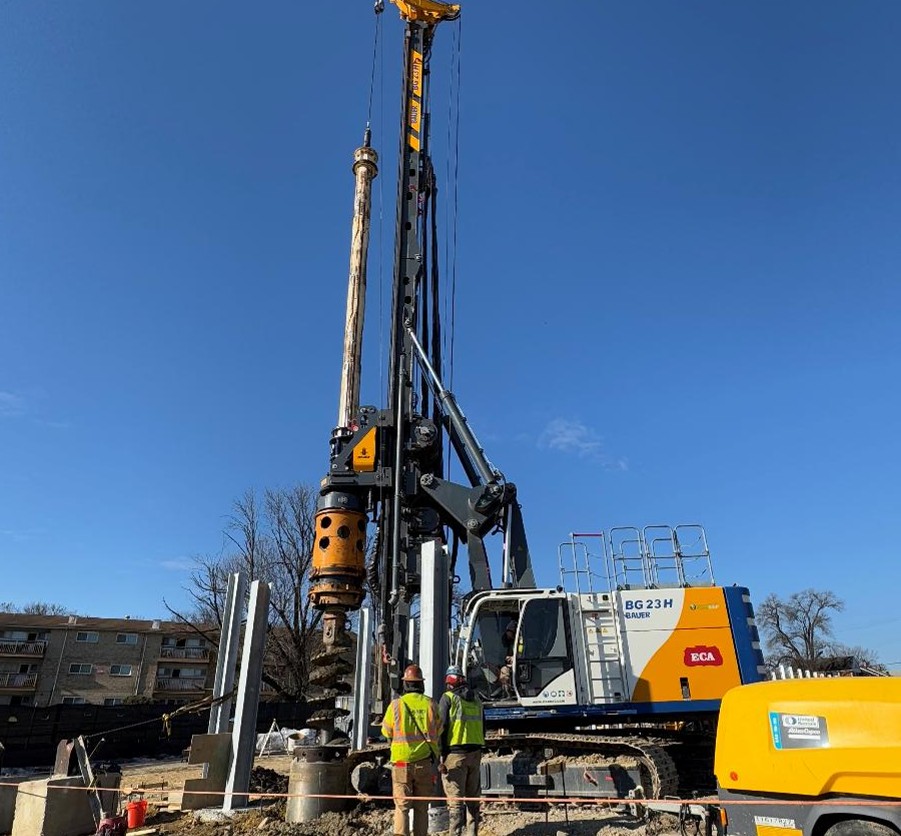
Drilled Shaft Solutions for the Most Demanding Projects
Drilled Shaft Installation Techniques
- Dry Method (open hole): Used in stable soil conditions.
- Temporary Cased Method: Suitable for unstable soils
- Permanently Cased Method: Suitable for unstable soils or areas with high groundwater.
- Slurry Method: Uses bentonite or polymer fluids to stabilize the excavation before concrete placement.
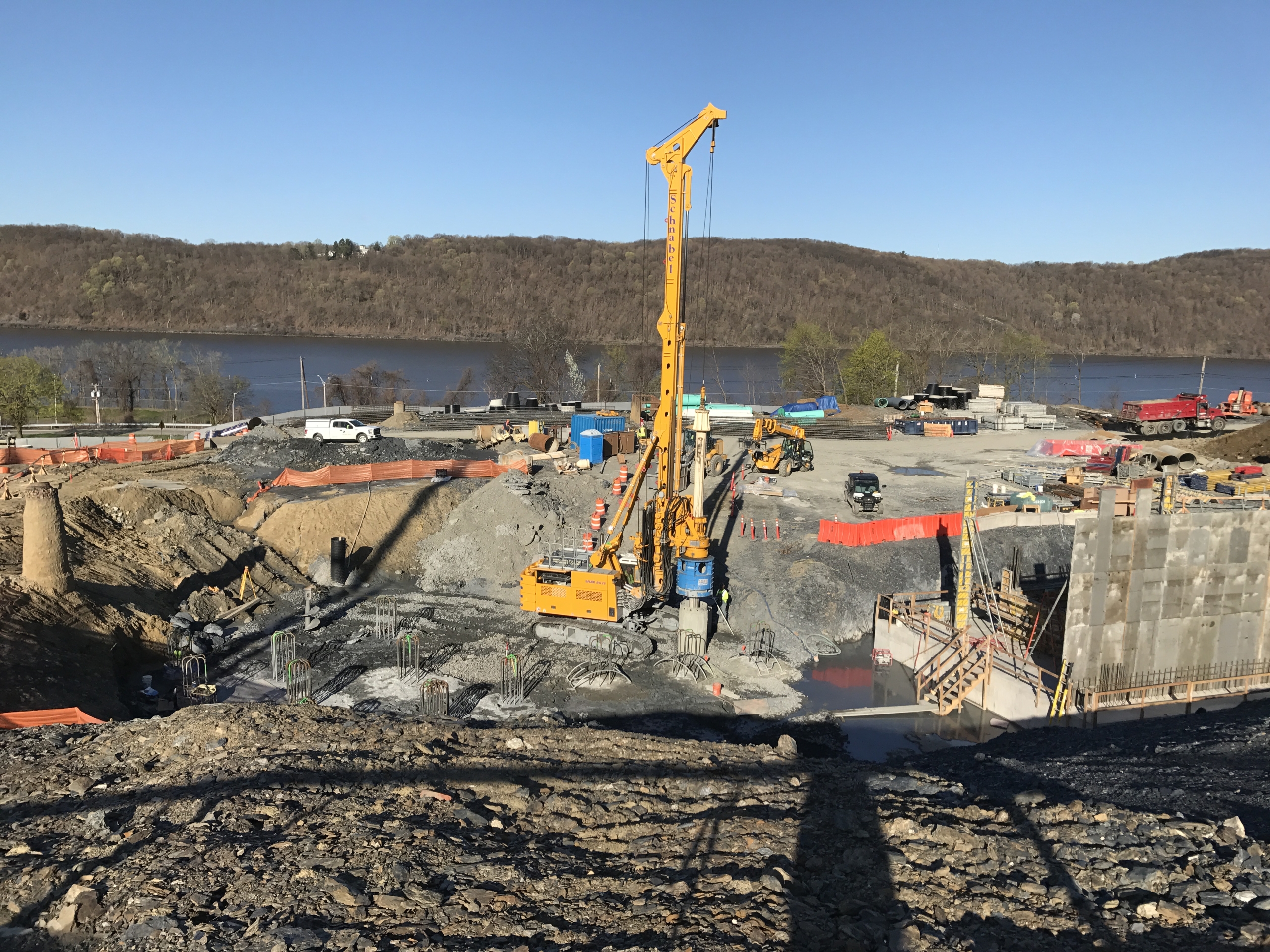
High-Capacity Foundations for Challenging Soil Conditions
Key Benefits of Drilled Shafts Include:
- High load-bearing capacity.
- Flexibility in design.
- Improved settlement control.
- Capacity to penetrate obstructions like boulders.
- Minimal vibration and noise during construction.
- Adaptability to a wide range of ground conditions.
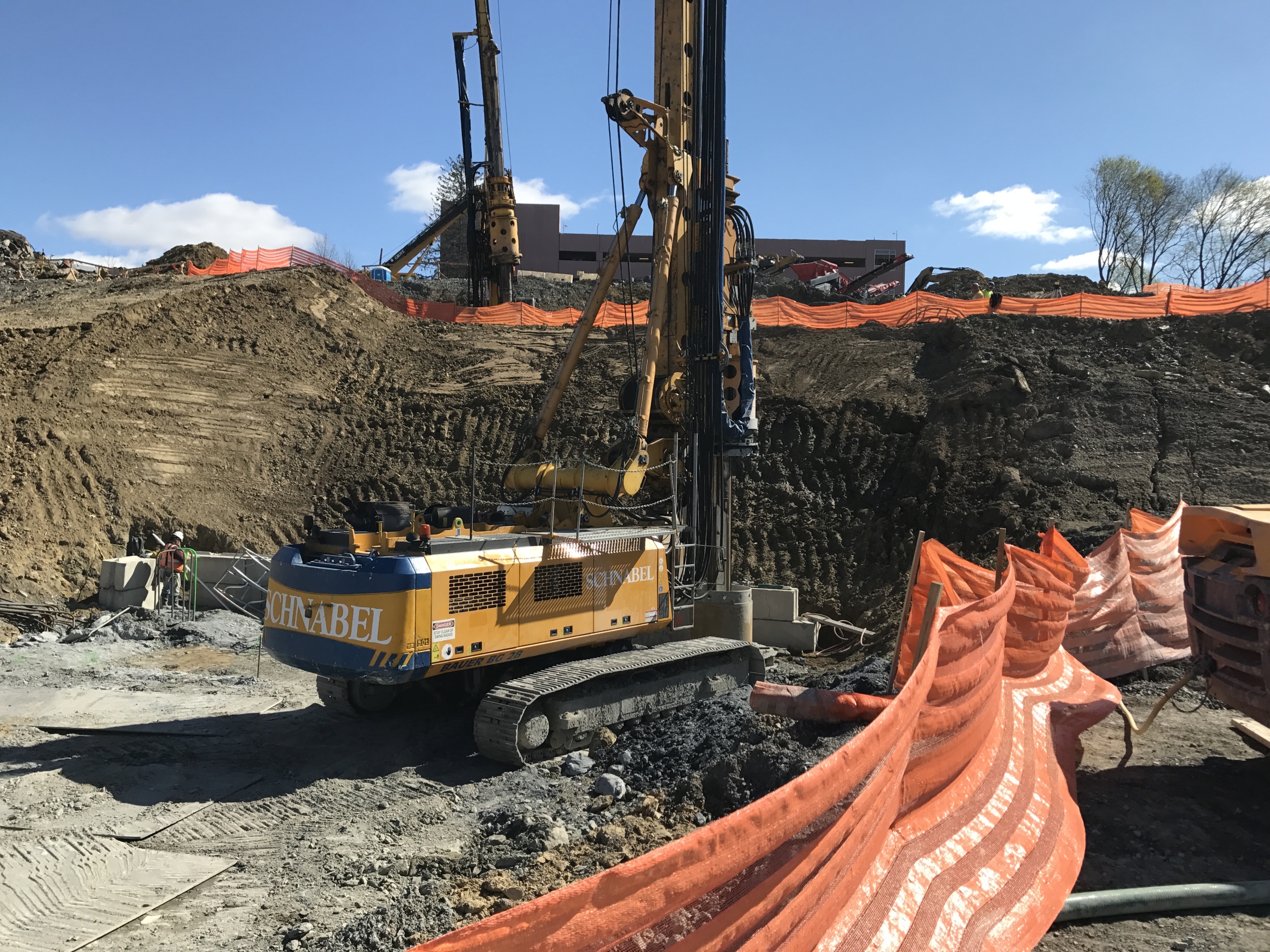
Sub-surface to street level, safely and efficiently.
Drilled Shaft Case Studies
With over 65 years of experience in the design and construction of drilled shafts, Schnabel ensures exceptional performance and long-term value for your foundation system.
